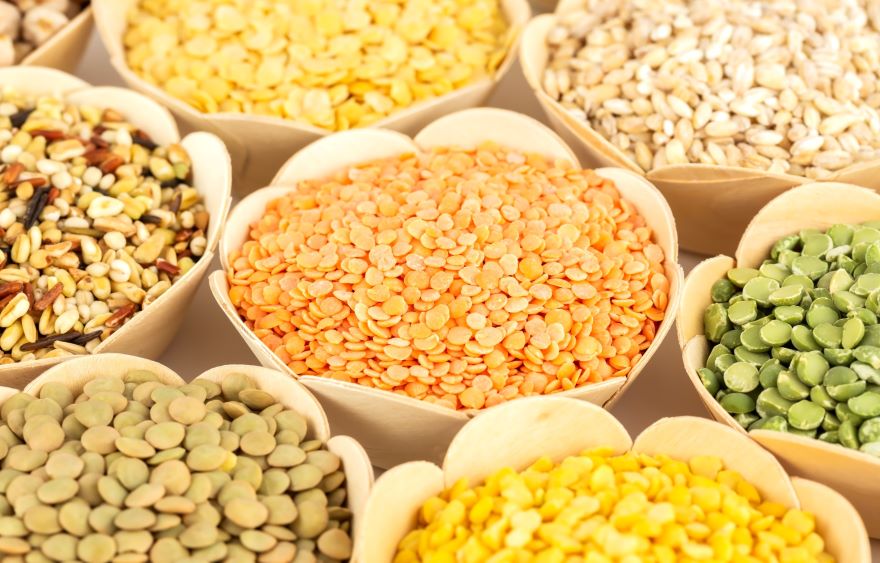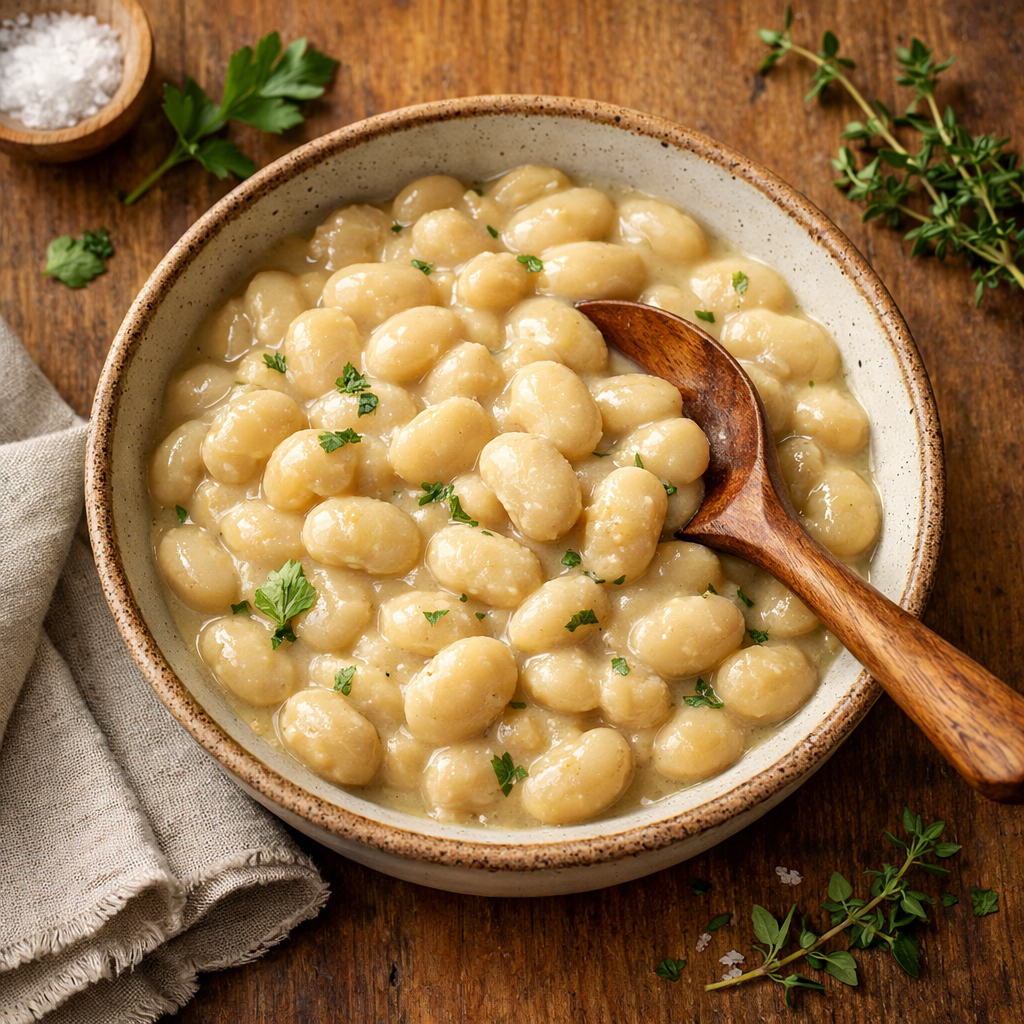Chinese lentils have been a staple in Asian cuisine for centuries, offering a versatile and nutritious ingredient to countless dishes. Chinese lentils’ diverse types, flavors, and textures make them an essential component in any kitchen, as they can be incorporated into many culinary creations.
In Chinese cooking, lentils play a significant role in providing protein and fiber, as well as adding unique taste profiles to meals. Chinese lentils’ adaptability and widespread use in both traditional and modern cuisine can be seen in numerous dishes, from soups to stir-fries.
Their numerous health benefits make lentils celebrated not only for their taste and culinary uses. Rich in nutrients such as iron, potassium, and vitamin B6, Chinese lentils contribute to a balanced diet and overall well-being. This makes them an ideal choice for those seeking delicious food that also supports their health goals.
Key Takeaways
Chinese lentils are a versatile ingredient in both traditional and modern Asian cuisine. These legumes provide valuable nutrients such as protein, fiber, iron, and potassium. Nutritional benefits and adaptability make Chinese lentils a popular choice for diverse meal options.
What are Chinese Lentils
Chinese lentils, also known as adzuki beans, are small, red legumes that are popular in East Asian cuisine. Their mildly sweet taste makes them suitable for both sweet and savory dishes. As a rich source of plant-based protein, carbohydrates, and healthy fats, Chinese lentils can play an important role in maintaining a balanced diet.
I find that Chinese lentils offer excellent nutritional benefits. They are high in fiber, which supports digestion and helps maintain regularity. Additionally, they provide a generous amount of protein, which is essential for muscle growth and repair. Compared to other legumes, Chinese lentils contain relatively low amounts of carbohydrates and fat, making them a healthier and more nutrient-dense option for people watching their caloric intake. Chinese lentils have low glycemic index carbohydrates, absorbed slowly by the body, maintaining stable blood sugar levels, and reducing type-2 diabetes risk.
When it comes to incorporating Chinese lentils into my diet, there are countless options to choose from. One of my favorite recipes is Kung Pao Lentils, a delicious and protein-packed twist on the classic Kung Pao dish. Another great option is an Instant Pot Lentil Soup, which combines lentils with nutritious vegetables like carrots and daikon, offering a comforting and hearty meal.
In summary, Chinese lentils are not only flavorful and versatile in their culinary applications but also provide an array of essential nutrients that contribute to an overall balanced and healthy diet. From protein to healthy fats and carbohydrates, these tiny red legumes pack a powerful nutritional punch in every bite.
Culinary Uses of Chinese Lentils
In Soups
I love using Chinese lentils in soups because they bring a unique texture and flavor to the dish while also being very versatile. One of my favorite soups to make with Chinese lentils is a hearty lentil soup. To start, I sauté onions, carrots, and celery in oil, which helps to develop a rich base of flavors. Then, I add vegetable broth, lentils, and seasoning, like salt, pepper, and garlic. Simmering the soup for about 30 minutes allows the lentils to fully cook and absorb the flavors from the broth and veggies. Sometimes, I add a splash of lemon juice at the end for a touch of brightness, making it both comforting and refreshing. This soup is vegan, vegetarian, and plant-based, so it’s suitable for various dietary preferences.
In Salads
Chinese lentils also make a wonderful addition to salads. For example, a lentil and rice salad can be a delicious and nutritious option, filled with colorful veggies like red pepper, carrots, and onions. In this dish, I combine cooked lentils and rice with a variety of chopped vegetables, toss them in a light sauce or dressing, and season with salt and pepper to taste. Serve this salad chilled or at room temperature, making it perfect for lunches, potlucks, or picnics.
In Main Dishes
For a more substantial meal, Chinese lentils can be the star of some outstanding main dishes. One popular recipe is Kung Pao Lentils which incorporate the classic flavors of Kung Pao sauce paired with protein-packed lentils and a medley of veggies, like eggplant and chilies. Another delicious recipe to try is coconut lentil curry. Here, I simmer lentils in a mixture of coconut milk, garlic, and spices until they’re tender and infused with flavor. Serving this curry over rice or with a side of toasted flatbread makes it a satisfying and well-rounded meal.
As an Appetizer
Chinese lentils are also great as appetizers or sides. For example, I like to serve lentil-stuffed peppers as a flavorful bite-sized treat. To make them, I cook lentils with some onions, garlic, and seasoning, then stuff the mixture into small sweet peppers. I bake the peppers until they’re tender and the flavors meld together, creating a delightful plant-based appetizer that even non-vegetarians enjoy.
How to Cook Chinese Lentils
I find that cooking Chinese lentils is quite simple and requires only a few ingredients. I prefer using dried lentils, as it gives me control over their texture and flavor. The following paragraphs will outline my go-to method for cooking perfect Chinese lentils every time.
First, I measure out the desired amount of dried lentils and rinse them thoroughly under cold water. This step helps remove any stones, debris, or dust that might be present. After cleaning the lentils, I place them in a pot with enough water to cover them by about 1-2 inches. Use 3 cups of water for every 1 cup of dried lentils.
Before starting to cook lentils, I add a pinch of salt to the pot. I’ve found that the salt enhances the lentils’ natural flavors without overpowering their earthy taste. If you’d like to infuse additional flavor into the lentils, consider adding some bay leaves or other herbs.
Simmer lentils for 20-30 mins after boiling. The exact cooking time may vary, so it’s essential to keep an eye on the lentils and stir occasionally. I aim for a tender yet firm texture in my cooked lentils, ensuring that they do not get overly mushy.
When the lentils reach my desired texture, I promptly remove them from the heat and drain off any excess water. Use cooked lentils in Chinese salads, stir-fries, or as a side dish.
In summary, Chinese lentils are a versatile and nutritious ingredient for various dishes, easy to cook with water, salt, and bay leaves. The resulting cooked lentils boast a rich, earthy flavor and texture that adds depth and variety to many dishes.
Nutritional Benefits of Chinese Lentils
As a nutrition enthusiast, I’ve always considered lentils to be a staple ingredient in my diet, and Chinese lentils are packed with nutrients too. They are an excellent source of protein, which is essential for building and maintaining muscles and tissues. They contain a good amount of carbohydrates as well, providing energy to the body.
One of the key factors that make lentils healthy is their high fiber content. A single serving of cooked lentils contains 9 grams of fiber. This aids in digestion, stabilizes blood sugar levels, and can help maintain a healthy weight. Additionally, the fiber in lentils contributes to lowering cholesterol and safeguarding against diabetes and colon cancer.
With a low calorie count, lentils are a nutritious choice for those trying to maintain or lose weight. A half-cup serving of cooked lentils has only 140 calories while offering a filling sensation due to their dense nutrient content. This makes them a great alternative to more calorie-dense protein sources like red meat.
Chinese lentils offer essential minerals and vitamins for health benefits, including immune support and nerve cell function.
In conclusion, incorporating the lentils into my diet has been a great decision for me. They’re not only healthy and nutritious but also versatile, making them an ideal ingredient for a variety of dishes.
Uses of Different Types of Lentils in Chinese Cuisine
Chinese cuisine is known for its versatility and use of various ingredients. In this section, I’ll discuss the uses of different types of lentils in Chinese dishes, focusing on green, brown, and red lentils.
Green Lentils
Green lentils add thickness to dishes with their earthy flavor and firm texture. I’ve found that green lentils are great in Chinese salads, as they maintain their shape well after cooking and bring an interesting texture to the meal. Additionally, their relatively mild flavor allows the other ingredients in the dish to shine through.
Brown Lentils
Brown lentils hold their shape well and add flavor to Chinese soups. Their texture is comparable to that of whole grains, giving the soup a hearty and filling quality. Chinese cuisine combines brown lentils with mushrooms, tofu, or leafy greens for a balanced and satisfying meal.
Red Lentils
Lastly, red lentils have a softer texture compared to green and brown lentils, making them ideal for use in Chinese curries and sauces. After cooking, red lentils can easily break down and integrate into a dish, creating a smooth and creamy texture. This characteristic makes red lentils a popular choice for thickening sauces or adding substance to a curry.
In conclusion, the versatility of lentils allows them to be used in various ways in Chinese cuisine. Their different textures and flavors make lentils an excellent addition to various dishes, such as salads, soups, and curries. By understanding the unique properties of green, brown, and red lentils, I can better appreciate their roles in creating delicious and diverse Chinese meals.
Chinese Lentils Vs Other Lentils
I’ve explored various types and varieties of lentils, and one thing that I’ve learned is that Chinese Lentils have their own unique characteristics when compared to other popular lentils like green, brown, and red lentils. Let me explain the differences in terms of texture, flavor, and usage in cooking.
Chinese lentils, also known as adzuki beans, are small, reddish-brown in color, and have a slightly sweet flavor. Lentils break down seamlessly and become creamy when cooked, making them suitable for soups and desserts. In fact, Chinese Lentils are a popular ingredient in Asian cuisine, especially in sweet red bean paste.
Green lentils, on the other hand, have a more earthy flavor and a slightly firm texture when cooked. They hold their shape well, making them ideal for salads and side dishes. The same goes for brown lentils, which have a mild, somewhat nutty taste. Their texture is slightly softer than green lentils, but they remain relatively intact when cooked.
Red lentils have a more delicate flavor, and their texture is the softest of all the varieties mentioned. When cooked, red lentils often lose their shape, turning into a mushy consistency. This makes them perfect for thickening soups, stews, or creating creamy Indian dal dishes.
In summary, Chinese lentils stand out for their unique sweet flavor and creamy texture when cooked, which differs from the earthy, nutty flavors, and firmer textures of green and brown lentils. Meanwhile, red lentils are known for their delicate flavor and easily-breakable texture. Each type of lentil has its purpose in various dishes, and understanding these differences will improve your culinary creations.
Finding and Storing Chinese Lentils
Finding these lentils can be an exciting adventure, especially when exploring different cuisines. I enjoy visiting Middle Eastern and Asian grocery stores, where lentils are a staple ingredient. They often have an impressive variety of lentils available, sometimes with Chinese lentils on the shelf. If I’m not near a specialty store, my local supermarket’s international aisle might also carry them.
When it comes to incorporating Chinese lentils into my gluten-free diet, I feel confident because these protein-packed legumes are naturally free from gluten. They make for a nutritious and satisfying alternative to wheat or other gluten-containing ingredients. Additionally, lentils have a delightful texture that pairs well with various flavors like soy sauce.
Now, let me share my tried-and-tested method for storing Chinese lentils. Keeping them in a cool, dry, and dark place like my pantry ensures that they remain fresh and retain their nutritional value. I usually store lentils in an airtight container to protect them from moisture, pests, and other contaminants.
Remember that proper storage is essential, especially if you want to enjoy your lentils over a more extended period. By following these simple guidelines, I’ve managed to keep my lentils fresh for months, allowing me to whip up delicious and nutritious meals whenever I please.
Frequently Asked Questions
- What is a popular Chinese lentil recipe?
One popular Chinese lentil recipe is Kung Pao Lentils. This dish features cooked lentils tossed in a spicy, savory Kung Pao sauce with vegetables and peanuts for added texture and flavor. - How are Chinese lentils different from other Asian lentils?
In Chinese cuisine, lentils are often used whole rather than split or pureed like in some Indian or Middle Eastern cuisines. Chinese lentil dishes typically use a variety of lentils, including red, green, and brown lentils, which have different textures, flavors, and cooking times. Additionally, lentils in Chinese dishes are often paired with unique flavorings, such as soy sauce, ginger, and garlic. - What are common spices used in Chinese lentil dishes?
Some common spices and seasonings used in Chinese lentil dishes include soy sauce, ginger, garlic, Szechuan peppercorns, star anise, and dried red chili peppers. These ingredients create a complex, flavorful, and sometimes spicy base for lentil dishes. - How are lentils used in Chinese cuisine?
Chinese cuisine uses lentils in various ways, such as standalone side dishes, stir-fries, soups, or added to rice and noodle dishes for protein, texture, and flavor. - Which lentils are best suited for Chinese cooking?
I recommend using red, green or brown lentils for Chinese cooking. Red lentils have a slightly sweet flavor and break down during cooking, making them suitable for thicker sauces or dishes that require a softer texture. Green and brown lentils retain their shape better, making them a great choice for stir-fries and other dishes that call for whole lentils. - Are there any traditional Chinese lentil soups?
Yes, there are traditional Chinese lentil soups, such as the “Red Lentil and Chard Soup.” This soup features a flavorful broth made with soy sauce, ginger, garlic, and various seasonings, combined with red lentils and chopped chard or other leafy greens. The result is a hearty, warming soup that showcases the versatility of lentils in Chinese cuisine.

*We may earn a commission for purchases made using our links. Please see our disclosure to learn more.



